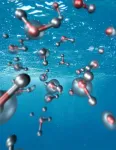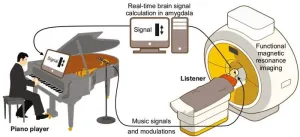(Press-News.org) BEAUFORT, N.C. –With fish stocks declining globally, more than 190 countries recently made a commitment to protect about a third of the world’s oceans within “Marine Protected Areas,” or MPAs by the year 2030. But these designated areas of the ocean where fishing is either regulated or outright banned can come at a huge cost to some coastal communities, according to a new analysis.
To help prepare for the expansion of MPAs, an international team of researchers from Duke University, Florida State University, World Wildlife Fund and other organizations assembled a global dataset of over 14,000 fish surveys in and around 216 marine protected areas (MPA) in 43 countries to determine what works and why.
Their analysis appears the week of Feb. 26 in the Proceedings of the National Academy of Sciences.
Perhaps not surprisingly, the study found that no-take MPAs are the most effective in restoring fish populations in heavily affected areas. However, for coastal communities who depend on fishing for food, income, and important cultural/Indigenous practices, the new study suggests there may be other effective options.
“In those under-resourced and culturally important areas, it would be unethical to take away local and indigenous people’s rights to harvest and eat fish,” said lead author David Gill, an assistant professor of marine science and conservation at Duke University’s Marine Lab in Beaufort, NC.
Multiple-use MPAs, in which fishing can be regulated by species, size, or season, are a reasonable alternative.
“Many people, especially those in coastal communities, have strong food, job, or cultural ties to the ocean,” said co-author Dominic Andradi-Brown, lead marine scientist at World Wildlife Fund. “Our results show that big gains for nature don't have to come at the cost of excluding people. Future ocean protection and conservation that is tailored to allow a range of uses can be successful -- provided that good management is in place.”
“Our research shows that both no-take and multiple-use MPA approaches were 97% likely to improve fish populations,” Gill said. “But neither will work very well without adequate staff or sustainable use regulations in place.”
The study recommends investing in enhanced staff resources and contextually-appropriate management, particularly for multiple-use MPAs, and using a portfolio of well-managed no–take & multiple-use MPAs designed to meet the local context.
“It's not an all-or-nothing game,” Gill said. “There are options out there to get positive results. You can get benefits from marine protected areas where fishing is allowed. But they have to be done well.”
The authors recommend that it's important to take into account communities that depend on natural resources to survive and thrive. In areas where no-take MPAs are not ethical or possible, well-staffed and appropriately regulated multiple use MPAs are an excellent alternative.
“A key takeaway from these results is that context matters,” Gill said. “There is no cookie-cutter approach to effectively, and equitably, protect the world’s marine ecosystems. We need to consider what mix of conservation approaches are best for the local context and then invest in managing them fairly, and managing them well.”
This research was supported by the US National Science Foundation (DBI-1052875), the David H. Smith Conservation Fellowship, the Arnhold UC Santa Barbara-Conservation International Climate Solutions Collaborative, the Waitt Foundation, and the Danish Independent Research Council (0165-00018B).
CITATION: “A Diverse Portfolio of Marine Protected Areas Can Better Advance Global Conservation And Equity,” David A. Gill, Sarah E. Lester, Christopher M. Free, Alexander Pfaff, Edwin Iversen, Brian J Reich, Shu Yang, Gabby Ahmadia, Dominic A. Andradi-Brown, Emily S. Darling, Graham J. Edgar, Helen Fox, Jonas Geldmann, Duong Trung Le, Michael B. Mascia, Roosevelt Mesa-Gutiérrez, Peter J. Mumby, Laura Veverka, Laura M. Warmuth. Proceedings of the National Academy of Sciences, Feb. 26, 2024. DOI: 10.1073/pnas.2313205121
END
Protecting fish doesn’t have to mean neglecting people, study concludes
Marine Protected Areas must be flexible and responsive, not absolute
2024-02-26
ELSE PRESS RELEASES FROM THIS DATE:
What will it take for China to reach carbon neutrality by 2060?
2024-02-26
To become carbon neutral by 2060, as mandated by President Xi Jinping, China will have to build eight to 10 times more wind and solar power installations than existed in 2022. Reaching carbon neutrality will also require major construction of transmission lines.
China land use policies will also have to be more coordinated and focused on a nation-wide scale rather than be left to ad hoc decisions by local governments. That’s because 80% of solar power and 55% of wind power will have to be built within 100 miles of major population centers.
These are the conclusions of a new study from ...
A new theoretical development clarifies water's electronic structure
2024-02-26
There is no doubt that water is significant. Without it, life would never have begun, let alone continue today – not to mention its role in the environment itself, with oceans covering over 70% of Earth.
But despite its ubiquity, liquid water features some electronic intricacies that have long puzzled scientists in chemistry, physics, and technology. For example, the electron affinity, i.e. the energy stabilization undergone by a free electron when captured by water, has remained poorly characterized from an experimental ...
Live music emotionally moves us more than streamed music
2024-02-26
How does listening to live music affect the emotional center of our brain? A study carried out at the University of Zurich has found that live performances trigger a stronger emotional response than listening to music from a device. Concerts connect performers with their audience, which may also have to with evolutionary factors.
Music can have a strong effect on our emotions. Studies have shown that listening to recorded music stimulates emotional and imaginative processes in our brain. But what happens when we listen to music in a live setting, for example at a music festival, at the opera or a folk concert? ...
Detroit research team to develop novel strategies to identify genetic contributions to cancer risk and overcome barriers to genetic testing for African Americans
2024-02-26
DETROIT – A team of researchers from Wayne State University and the Barbara Ann Karmanos Cancer Institute has received a five-year, $9.6 million grant from the National Cancer Institute of the National Institutes of Health for the study “Genetic Variation in Cancer Risk and Outcomes in African Americans.” This is a Program Project Grant that includes three large studies. The team will work to improve the identification and clinical management of hereditary and multiple primary cancers in African Americans, a population that is currently underrepresented in genetic research.
According to Ann Schwartz, Ph.D., principal investigator of the project, professor and ...
Vaping can increase susceptibility to infection by SARS-CoV-2
2024-02-26
RIVERSIDE, Calif. -- Vapers are susceptible to infection by SARS-CoV-2, the virus that spreads COVID-19 and continues to infect people around the world, a University of California, Riverside, study has found.
The liquid used in electronic cigarettes, called e-liquid, typically contains nicotine, propylene glycol, vegetable glycerin, and flavor chemicals. The researchers found propylene glycol/vegetable glycerin alone or along with nicotine enhanced COVID-19 infection through different mechanisms.
Study results appear in the American Journal of Physiology.
The researchers ...
Dissecting the roles for excitatory and inhibitory neurons in STXBP1 encephalopathy
2024-02-26
A recent study from Baylor College of Medicine and Texas Children’s Hospital has discovered inhibitory and excitatory neurons play distinct roles in the pathogenesis of STXBP1 encephalopathy, one of the top five causes of pediatric epilepsies and among the most frequent causes of neurodevelopmental disorders. This early-onset disorder is caused by spontaneous mutations in the syntaxin-binding protein 1 (STXBP1) gene. While STXBP1 gene variants impair both excitatory and inhibitory neurotransmission, this study led by Dr. Mingshan Xue, associate professor at Baylor and principal investigator at the Jan and Dan Duncan Neurological Research Institute (Duncan ...
Boston College biologist awarded $2.5-million NIH grant to explore the role of viral insulins and potential applications to cancers
2024-02-26
Chestnut Hill, Mass (2/26/2024) – Boston College Assistant Professor of Biology Emrah Altindis has been awarded a five-year, $2.5-million grant from the National Institutes of Health to study viral insulins and mechanisms related to IGF-1 receptor protein inhibition and its potential applications in cancer treatment.
Altindis said he and the researchers in his lab will use the grant to learn more about how to use specific viral insulins – particularly insulin-like growth factor-1 (IGF-1) – to inhibit IGF-1 receptor action, which is increased in a range ...
New clinical practice guideline provides evidence-based recommendations for immunotherapy for inhalant allergy
2024-02-26
ALEXANDRIA, VA —The American Academy of Otolaryngology–Head and Neck Surgery Foundation published the Clinical Practice Guideline: Immunotherapy for Inhalant Allergy today in Otolaryngology–Head and Neck Surgery. This clinical practice guideline identifies quality improvement opportunities and provides clinicians trustworthy, evidence-based recommendations on the management of inhalant allergies with immunotherapy, supporting them to provide enhanced care to patients aged 5 years and older who are experiencing symptoms from inhalant allergies.
“More ...
SFU-led research team designs a cutting-edge protein lawnmower
2024-02-26
An SFU-led collaboration has designed the first synthetic protein-based motor which harnesses biological reactions to fuel and propel itself.
“Imagine if a Roomba could be powered only by the dirt it picks up,” says SFU Physics professor Nancy Forde, one of the authors of the study.
The team’s paper, led by SFU Physics PhD graduate Chapin Korosec and published today in Nature Communications, describes a protein-based molecular motor called “The Lawnmower,” which has been designed to cut a lawn of peptide “grass.” ...
Metal in glitter impairs aquatic plant growth, study shows
2024-02-26
Glitter is used in a wide array of colors and shapes in apparel, footwear, cosmetics, makeup, handbags, festive decorations, arts and crafts, and jewelry, among many other applications. During the Carnival holidays, hundreds of thousands of Brazilians cover parts of their bodies with it while dancing in the streets. Its brilliance is dazzling but it is considered an emerging pollutant by many scientists: like other microplastics (small plastic pieces less than 5 mm long), it is not filtered by wastewater treatment plants and ends up in rivers and the sea, interfering with aquatic life in various ways.
A study conducted at the Federal University of ...
LAST 30 PRESS RELEASES:
Nanoplastics have diet-dependent impacts on digestive system health
Brain neuron death occurs throughout life and increases with age, a natural human protein drug may halt neuron death in Alzheimer’s disease
SPIE and CLP announce the recipients of the 2025 Advanced Photonics Young Innovator Award
Lessons from the Caldor Fire’s Christmas Valley ‘Miracle’
Ant societies rose by trading individual protection for collective power
Research reveals how ancient viral DNA shapes early embryonic development
A molecular gatekeeper that controls protein synthesis
New ‘cloaking device’ concept to shield sensitive tech from magnetic fields
Researchers show impact of mountain building and climate change on alpine biodiversity
Study models the transition from Neanderthals to modern humans in Europe
University of Phoenix College of Doctoral Studies releases white paper on AI-driven skilling to reduce burnout and restore worker autonomy
AIs fail at the game of visual “telephone”
The levers for a sustainable food system
Potential changes in US homelessness by ending federal support for housing first programs
Vulnerability of large language models to prompt injection when providing medical advice
Researchers develop new system for high-energy-density, long-life, multi-electron transfer bromine-based flow batteries
Ending federal support for housing first programs could increase U.S. homelessness by 5% in one year, new JAMA study finds
New research uncovers molecular ‘safety switch’ shielding cancers from immune attack
Bacteria resisting viral infection can still sink carbon to ocean floor
Younger biological age may increase depression risk in older women during COVID-19
Bharat Innovates 2026 National Basecamp Showcases India’s Most Promising Deep-Tech Ventures
Here’s what determines whether your income level rises or falls
SCIE indexation achievement: Celebrate with Space: Science & Technology
Children’s Hospital Colorado performs region’s first pediatric heart and liver dual organ transplant
Australian team discover why quantum computers have memory problems over time
What determines the fate of a T cell?
Candida auris: genetic process revealed which could be treatment target for deadly fungal disease
Groundbreaking discovery turns household plastic recycling into anti-cancer medication
Blocking a key inflammatory pathway improves liver structure and vascular function in cirrhosis, study finds
Continuous spread: Raccoon roundworm detected in nine European countries
[Press-News.org] Protecting fish doesn’t have to mean neglecting people, study concludesMarine Protected Areas must be flexible and responsive, not absolute









